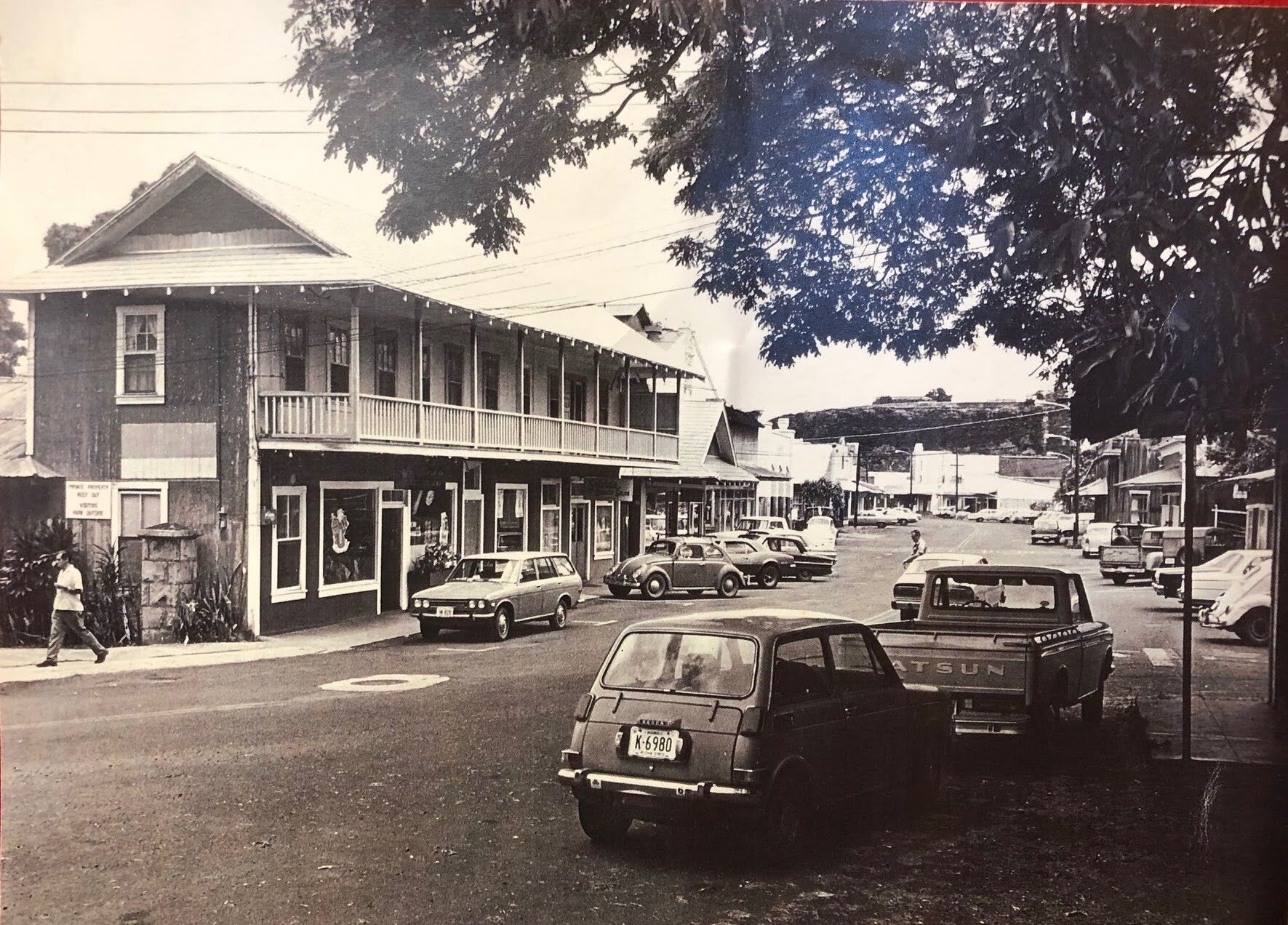
The History of Hanapepe
The native people of Hawai`i, Kanaka Maoli, inhabited the lush valley of Hanapepe for centuries before Captain Cook arrived in 1778.
Hanapepe means “crushed bay”; perhaps so named due the landslides in the valley or the appearance of the cliffs from the sea to the rocks surrounding the deep bay area.

Hanapepe Valley is a fertile area where many foods such as banana, sugar cane, and sweet potato have been known to grow. Besides growing kalo, from which “poi” is made, Hawaiians developed salt cultivated in saltwater ponds for trade with sailors. Salt trading was the earliest entrepreneurial legacy of Hanapepe. The right to harvest salt, handed down through families, continues today.
ENTREPRENEURIAL IMMIGRANTS
The sugar industry flourished in the 1880's bringing Chinese, Japanese and Filipino immigrants to the islands. Most stores and towns on Kaua`i were built and owned by the sugar plantations. Hanapepe, however, was built by entrepreneurial immigrants.
Many who retired from the sugar plantations or could not adapt to their strict working conditions came to Hanapepe. These arrivals to the town grew taro and rice or began small farms and businesses to serve the local community.
Labor union organizers in the early 1900's were welcomed in Hanapepe. Workers in the first half of the century who organized to strike for better wages and conditions at sugar and pineapple plantations were not allowed to reside at plantation camps; strikers had to stay in independent areas such as Hanapepe. The nearby harbor had many longshoremen who had concerns about working conditions and safety as well. Today workers have better safety regulations, wages, and retirement benefits due to the activism of these previous generations.

OTHER INTERESTING FACTS
Hanapepe was one of the locations visited by the United States Exploring Expedition under Charles Wilkes; the expedition arrived in Hawaii in late September 1840, and spent some time on the islands.
It is one of the few towns on the island that was not created by the sugarcane plantations.
In the 1920s a deadly, historic labor battle occurred, later dubbed the Hanapepe massacre.
On August 27, 1980 Douglas Kenney, a co-writer of the film National Lampoon's Animal House, fell thirty feet to his death from the Hanapepe Lookout.
The town was the inspiration for Kokaua Town, the fictional hometown of the main characters in the Disney animated film Lilo & Stitch[3] and its related franchise (the town was not named until Lilo & Stitch: The Series). Hanapepe is the headquarters location for the ice cream company Lappert's Hawaii.[4]










